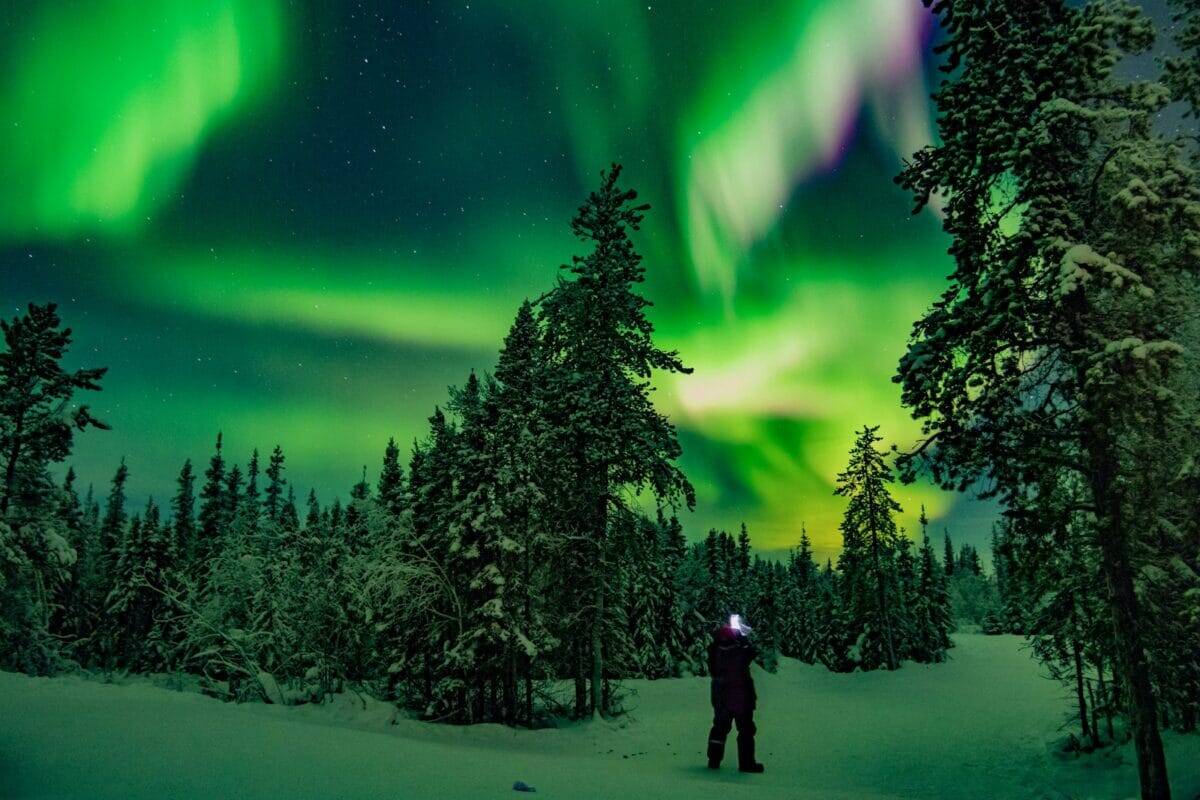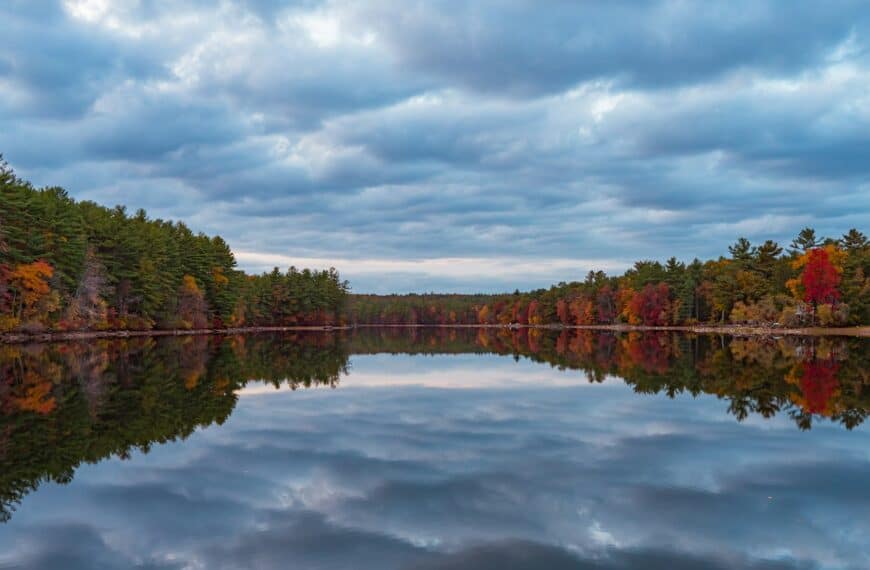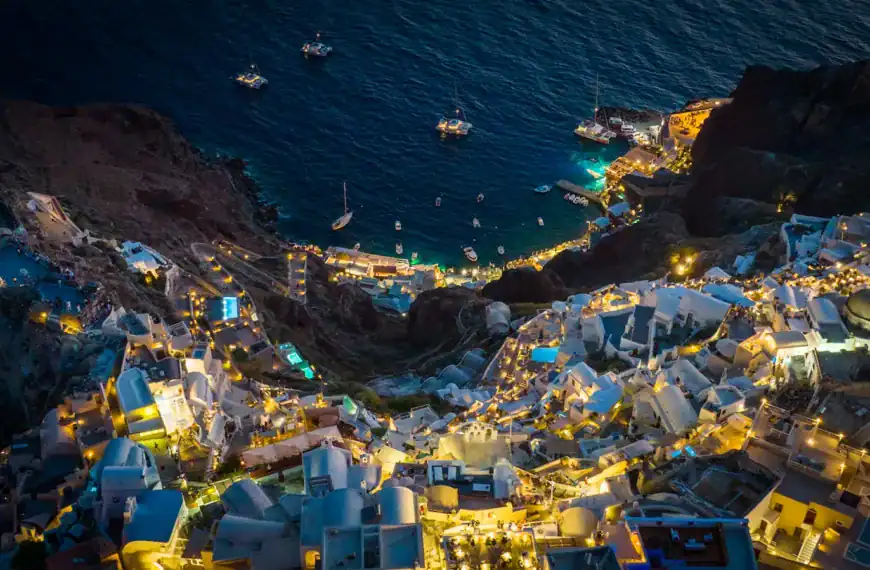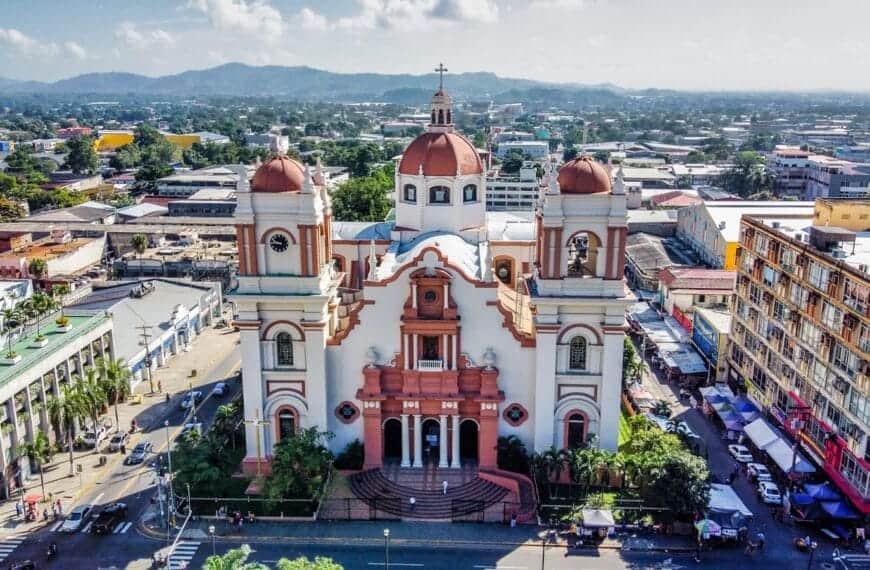Northwest Territories Travel Guide: Arctic Beauty & Bold Adventures
Intro to Northwest Territories Travel Guide
Epic Arctic landscapes, Indigenous heritage, and wild freedom
Welcome to Canada’s true north — where boreal forest meets tundra, rivers cut through endless wilderness, and the aurora dances across the sky more than 200 nights a year. The Northwest Territories (NWT) is a land of dramatic contrasts and ancient culture. Here, you’ll find thundering waterfalls, historic trading routes, Indigenous-led adventures, and more space than you could ever imagine.
Start your journey with our Northwest Territories Travel Guide and discover raw beauty, untamed spirit, and authentic stories at the edge of the Arctic.
💡Quick Facts:
Destination: Northwest Territories
Continent: North America
Country: Canada
Territory: Northwest Territories
Area: 1,346,106 km² (519,734 mi²)
Population: ~45,000 (2024 estimate)
Density: ~0.04 people per km² (one of the most sparsely populated regions in the world)
Capital: Yellowknife
Regions/Subregions: North Slave, South Slave, Dehcho, Sahtu, Beaufort Delta, Tłı̨chǫ
Language(s): English, French, plus 9 official Indigenous languages (including Inuktitut, Chipewyan, Gwich’in)
Currency: Canadian Dollar (CAD)
Time Zone(s): MST (UTC−7), some areas observe DST
Airports (Main/Regional):
– Yellowknife Airport (YZF) – primary regional hub
– Inuvik Mike Zubko Airport (YEV) – western Arctic access
– Fort Smith Airport (YSM), Norman Wells Airport (YVQ), Hay River (YHY)
Climate: Subarctic and Arctic – long, harsh winters; short, mild summers
Known For: Northern Lights, Arctic wildlife, remote wilderness, Nahanni National Park, Indigenous cultures, ice roads, midnight sun
🛂Arrival Info:
Entry requirements for tourists:
As part of Canada, a valid passport is required for all international visitors.
Visa-free countries (if applicable):
Visitors from the U.S., UK, EU, Australia, Japan, and many others may enter Canada visa-free for up to 6 months.
Visa-on-arrival:
Not available.
Official visa application:
Canada Immigration and Citizenship
💉Health Info:
Recommended vaccines for travelers:
Standard immunizations (MMR, DTP, influenza, COVID-19). Hepatitis A and rabies may be considered for wilderness travelers.
Current health advisories:
Travelers should check for extreme cold advisories in winter and remote area safety.
Local medical care access:
Medical facilities are available in Yellowknife and regional hubs, but limited in remote communities. Emergency evacuation insurance is advised.
Travel health updates — get coverage here
Stay Informed with Official Updates: World Health Organization – International Travel and Health | Centers for Disease Control and Prevention – Global Travel Health
🚨Travel Advisory:
– The Northwest Territories is generally safe, but extreme weather, remoteness, and wildlife require preparedness
– Ice road travel and backcountry treks demand caution and emergency supplies
– For updates, check Canada Travel Advice
Stay Informed with Official Updates: US Travel Advisory | UK Foreign Travel Advice
📅Holidays:
National Indigenous Peoples Day (June 21): Territorial statutory holiday honoring Indigenous culture and heritage.
Canada Day (July 1): National holiday with local celebrations and community gatherings.
Thanksgiving (Second Monday in October): Celebrated with family meals; services may close.
Christmas Day (December 25): Public holiday across Canada.
New Year’s Day (January 1): Observed with closures and cold-weather festivities.
Expect reduced transport and government service operations during holidays.
💰Money Matters:
Official currency:
Canadian Dollar (CAD).
Exchange tips:
Currency exchange is limited—arrive with Canadian dollars or withdraw at ATMs in Yellowknife.
ATM availability and card usage:
ATMs are mainly found in Yellowknife and larger communities. Credit and debit cards widely accepted in populated areas.
Duty-free import limits:
CAD $200–$800 worth of goods, depending on length of stay outside Canada. Alcohol and tobacco limits apply.
Tipping advice:
Tipping is expected: 15–20% at restaurants, 10–15% for taxis and services.
🚍Transport:
– Limited road network – some communities accessible only by air or seasonal ice roads
– No rail lines; buses serve only local routes around Yellowknife
– Car rentals available in Yellowknife
– Driving challenges: wildlife crossings, frost heaves, long distances, fuel planning essential
📶Connectivity:
– Strongest mobile and internet coverage around Yellowknife and Inuvik
– Coverage drops drastically in remote communities
– Providers: Northwestel, Bell Mobility, Rogers (limited)
– Satellite phones or radio recommended for deep backcountry travel
📜Laws & Etiquette:
– Respect Indigenous communities’ customs, land rights, and signage
– Alcohol restrictions in some remote settlements – check local laws
– Dress modestly and prepare for cultural variation across First Nations, Inuit, and Métis communities
– Be cautious with photography in Indigenous areas – always ask permission
🛡️Emergency Info:
– Emergency Numbers: 911 (available in Yellowknife; may be redirected elsewhere in remote areas)
– Nearest U.S. Consulate: Calgary or Ottawa
– Travel insurance essential for wilderness travel, especially in winter or remote fly-in locations
– Use embassy locator tools: Embassies Worldwide
🌦️Weather:
– Winter (Nov–Apr): Bitterly cold, -20°C to -40°C common; ideal for Aurora viewing
– Summer (June–Aug): 15°C–25°C, long daylight hours or midnight sun
– Best time to visit:
– Summer for canoeing, hiking, and cultural festivals
– Winter for Aurora Borealis, dog sledding, ice roads, and snowmobiling
Weather Forecast
Northwest Territories Cities & Major Destinations
- Yellowknife
The capital of the Northwest Territories, Yellowknife sits on the shores of Great Slave Lake. It’s known for its incredible aurora viewing, colorful houseboats, gold rush history, and vibrant Dene and Métis culture. Visit in winter for dogsledding and ice road access or summer for 24-hour daylight and fishing. - Hay River
Located on the south shore of Great Slave Lake, Hay River is a gateway to waterfalls, fishing lodges, and the southern Mackenzie region. It offers excellent access to Twin Falls Gorge and is a hub for Indigenous culture and river shipping. - Fort Smith
Bordering Wood Buffalo National Park, Fort Smith is an excellent destination for paddling the Slave River Rapids and spotting bison herds. The town has a strong Métis community and deep connection to the region’s natural rhythms. - Inuvik
Far above the Arctic Circle, Inuvik is a cultural crossroads of the Gwich’in and Inuvialuit peoples. As the terminus of the Dempster Highway and access point to Tuktoyaktuk and the Arctic Ocean, it’s a remote, unforgettable destination. - Tuktoyaktuk (Tuk)
Canada’s only community on the Arctic Ocean accessible by public road, Tuk offers a powerful look into Inuvialuit culture, Arctic tundra life, and surreal ocean ice fields. - Fort Simpson
This small community is the gateway to Nahanni National Park Reserve and sits at the confluence of the Mackenzie and Liard rivers. It has a rich Dene heritage and a tranquil atmosphere.
How to Choose Where to Go in Northwest Territories
- Aurora chasers should base themselves in Yellowknife or Inuvik, where long, dark winters provide world-class viewing — often without needing to leave town.
- Wildlife lovers will enjoy Fort Smith and the Mackenzie Bison Sanctuary, where free-roaming wood bison can often be seen near the road. Caribou and foxes are also common in more remote regions.
- Paddlers and outdoor adventurers will want to explore the river systems near Fort Simpson, especially the iconic South Nahanni River — one of the world’s premier wilderness canoeing destinations.
- Cultural travelers should visit Inuvik, Tuktoyaktuk, and Fort Providence, where Indigenous knowledge, art, and language are central to community life.
- Arctic road trippers can drive the legendary Dempster Highway through the Yukon to reach Inuvik and the Arctic coast — one of Canada’s great bucket-list drives.
Natural Escapes & Scenic Highlights
- Nahanni National Park Reserve
A UNESCO World Heritage Site, Nahanni is home to dramatic canyons, Virginia Falls (twice the height of Niagara), alpine tundra, and world-class river journeys. Accessible by floatplane, this park defines NWT’s wild beauty. - Wood Buffalo National Park
One of the largest national parks in the world, it protects boreal forest, salt plains, and the only remaining natural nesting site of the endangered whooping crane. Also home to one of the world’s largest free-roaming bison herds. - Great Slave Lake
The deepest lake in North America and the second largest in Canada, Great Slave Lake offers endless boating, fishing, ice road travel, and northern lights reflections across its frozen expanse. - Mackenzie River
Canada’s longest river flows through the heart of the NWT. Canoeing or fishing its waters is a time-honored tradition and offers unmatched solitude and scenery. - Tundra and Arctic Ocean Coast
North of Inuvik, the landscape turns to Arctic tundra — treeless, windswept, and hauntingly beautiful. In summer, wildflowers blanket the ground; in winter, the ice stretches endlessly toward the horizon. - Twin Falls Gorge Territorial Park
Near Hay River, this park features two dramatic waterfalls: Alexandra Falls and Louise Falls. Both are accessible by a scenic hiking trail through the boreal forest.
Cultural & Historic Landmarks
- Prince of Wales Northern Heritage Centre (Yellowknife)
This museum and cultural center tells the story of the NWT’s peoples through exhibits on archaeology, traditional knowledge, art, and exploration. - Inuvik’s Igloo Church
The Our Lady of Victory Church is one of the most iconic buildings in the north, built in the shape of an igloo and lovingly maintained by local communities. - The Legislative Assembly (Yellowknife)
Tour this circular, open-concept building that reflects Dene governance traditions. Public tours offer insights into consensus government and territorial history. - Fort Simpson Heritage Park
A tranquil site showcasing traditional Dene structures, missionary history, and the confluence of two great rivers. It’s also a place for local festivals and ceremonies. - The Midnight Sun Mosque (Inuvik)
Canada’s northernmost mosque, this remarkable structure was shipped overland and river from Manitoba and is now an active spiritual and cultural hub. - Dempster Highway Historic Route
Stretching from Dawson City in Yukon to Inuvik in the NWT, this remote road follows Indigenous trails and historic trading routes through pristine wilderness.
Local Food, Arts & Experiences
Traditional Foods
- Arctic char, lake trout, and whitefish
- Caribou, moose, muskox
- Bannock and dried meat
- Wild berries and spruce tip teas
- Local specialties like “Eskimo donuts” and fish chowders
Art & Crafts
- Carvings from soapstone, bone, and antler
- Beaded moccasins and mittens
- Birchbark baskets and porcupine quill art
- Northern Tutchone, Gwich’in, and Inuvialuit motifs
Authentic Experiences
- Aurora viewing in a heated tipi outside Yellowknife
- Dog sledding through frozen lakes near Hay River
- Cultural storytelling and drum dances in Inuvik
- Ice fishing or jigging on Great Slave Lake
- Canoe building workshops with Dene guides
Major Festivals
- Snowking’s Winter Festival (Yellowknife)
- Great Northern Arts Festival (Inuvik)
- Open Sky Creative Society Festival (Fort Simpson)
- Old Town Ramble & Ride (Yellowknife)
Must-See Experiences in Northwest Territories
- See the Northern Lights in Yellowknife
One of the best places in the world for aurora viewing — thanks to clear skies, high solar activity, and minimal light pollution. - Paddle the South Nahanni River
Floatplane in, paddle through deep canyons and past Virginia Falls, and exit with a life-changing wilderness story. - Stand on the Arctic Ocean in Tuktoyaktuk
Whether it’s frozen solid or lapping at the tundra shore, the Arctic Ocean is awe-inspiring. Dip your toe in — if you dare. - Drive the Dempster Highway
This gravel road crosses the Continental Divide and tundra to reach Inuvik — an epic road trip full of wildlife, silence, and wonder. - Watch bison graze near Fort Providence
See these massive animals up close, sometimes even crossing the highway. Be patient, keep your distance, and take in a truly wild scene. - Experience 24-hour daylight or darkness
In summer, the midnight sun glows in places like Inuvik; in winter, the darkness brings the aurora. It’s a disorienting, magical phenomenon. - Visit a traditional fish camp
With permission, learn how local families catch, clean, dry, and smoke fish in time-honored ways that connect food, land, and story.
Book Northwest Territories tours now and experience the Arctic like never before.
Getting Around Northwest Territories
By Air
- Yellowknife is the primary hub, with connections from major Canadian cities.
- Regional airlines serve Inuvik, Fort Simpson, Hay River, and more.
- Charter flights and floatplanes are often necessary for parks and remote communities.
By Road
- The Yellowknife Highway (Highway 3) connects to southern Canada via Alberta.
- The Mackenzie Highway and Dempster Highway offer epic road trip opportunities.
- Winter roads and ice bridges connect communities in colder months (check local advisories).
Local Transportation
- Vehicle rentals are available in Yellowknife and Inuvik.
- Limited bus and taxi services exist in larger towns.
- Tours often include transport for excursions and cultural experiences.
Best Time to Visit Northwest Territories
Winter (November–March)
- Best time for aurora viewing, dog sledding, and winter festivals
- Cold temperatures (-30°C and colder), but magical experiences
- Ice roads open to remote areas
Spring (April–June)
- Break-up season brings longer days, but some roads and rivers may be in flux
- Wildlife sightings increase as migration begins
Summer (June–August)
- 24-hour daylight in northern communities
- Hiking, canoeing, and Arctic Ocean access
- Festivals, open roads, and accessible fly-in lodges
Fall (September–October)
- Short but stunning season of golden tundra and forest color
- Great time for moose watching and aurora
Best Travel Itineraries in Northwest Territories
5-Day Aurora & Culture Itinerary
Yellowknife → Dettah → Great Slave Lake
- Aurora lodge stay
- Dog sledding and cultural tour in a Dene community
- Ice fishing or snowmobiling across frozen lakes
7-Day Arctic Highway Adventure
Dawson (Yukon) → Inuvik → Tuktoyaktuk
- Drive the Dempster Highway
- Visit Inuvialuit towns and Arctic shore
- Camp under the midnight sun
10-Day Wild North Itinerary
Hay River → Fort Smith → Fort Simpson → Nahanni
- Chase waterfalls in Twin Falls Gorge
- Paddle or fly into Nahanni National Park
- Experience traditional Dene lands and hospitality
Travel Safety & Etiquette in Northwest Territories
- Respect Indigenous protocols: Always ask before photographing people or entering community lands.
- Prepare for isolation: Cell service and fuel stations can be scarce. Carry maps, emergency gear, and satellite communication if possible.
- Wildlife: Do not approach bison or bears. Observe from a safe distance.
- Weather: Be ready for extreme cold in winter and bugs in summer. Dress in layers and carry proper gear.
- Cultural sensitivity: Listen, ask questions respectfully, and support local guides, artists, and businesses.
- Driving tips: Bring spare tires, plan fuel stops, and check road conditions daily — especially on gravel or winter roads.
Nearby Provinces & Travel Pairings
- Yukon
Drive from Yellowknife or Inuvik into Whitehorse and explore more of the North’s gold rush history and mountainous wilderness. - Alberta
Start your journey in Edmonton or Fort McMurray, then road trip north into the Territories through boreal forest and river valleys. - Nunavut (via charter)
Take a small plane from Yellowknife to Cambridge Bay or Kugluktuk for an Arctic cultural extension into Canada’s eastern North. - British Columbia (via Fort Nelson)
Cross into the NWT from northern BC for a scenic road route that connects mountain passes to rivers and bison country.
Final Planning Checklist for Northwest Territories
- Book flights and remote lodges months in advance
- Check ice road conditions before traveling in winter
- Pack bug spray and bear spray for summer adventures
- Respect community closures or health advisories
- Download offline maps and emergency contacts
- Bring a good camera and spare batteries for the aurora
- Support Indigenous-owned businesses and experiences
For more expert travel tips, practical strategies, and trusted tools — visit our Homepage and get inspired for your next trip.










